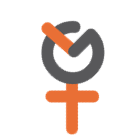Health
The last core domain concentrates on the existing relationship between gender and health, conceptually implying three different areas: heath status, health behaviours and access to health structures.
As for the previous domain, it has been possible to analyse only two of the three conceptualized areas due to the lack of consistent data regarding the area of “health behaviours” (they have shown to be generally not complete or not disaggregated by sex). Each sub-domain is then divided into concepts or “gender indicators”. “Health status” has been divided into “self-perceived health”, characterized by the presence of good data since in 2012 Europe was very close to gender equality in this ambit; “life expectancy in absolute value at birth”, that states that women in 2012 outlived men by an average of 5.6 years; and “healthy life years”, which as the first indicator mentioned, is featured by the presence of good data, as in 2012 the European Union was very close to equality.
As for what concerns the second sub-domain, “access to health structures”, data confirm that in 2012 Europe narrowed equality in access to medical services between women and men, and this is particularly emphasized by data such as 0.8, which is the percentage points related to gender gap in this ambit in the whole European Union (and also by the fact that there are little and unimportant differences among States too). Still, there are negative data coming from the differences among Member States as regards the level of achievement in meeting medical needs of the total population: for instance, the 99.6% of the total population of Slovenia declares having unmet medical needs and from 2005, in the whole European Union, the percentage of individuals who declare this has significantly increased. Another important aspect of the second sub-domain is the meeting of dental needs, whose data amount to 0.3 when speaking about Europe's average gender gap: in this ambit too, Europe is very close to equality.
To conclude, we can say that this domain, more than the others, presents a mixed picture, almost touching equality in certain areas and instead having worrying data in others. Indicators of the “Health” domain show that there is the need to address strong efforts in its direction, since it is crucially linked to other fundamental aspects of life such as economic independence or human dignity.
In the Gender Equality Index Report 2015 we can find, amongst the “key trends” of this domain, the idea that these data confirm the old adage “women get sicker and men die younger”.
There is currently no content classified with this term.



